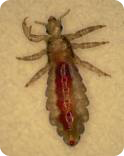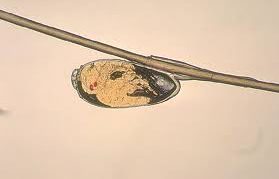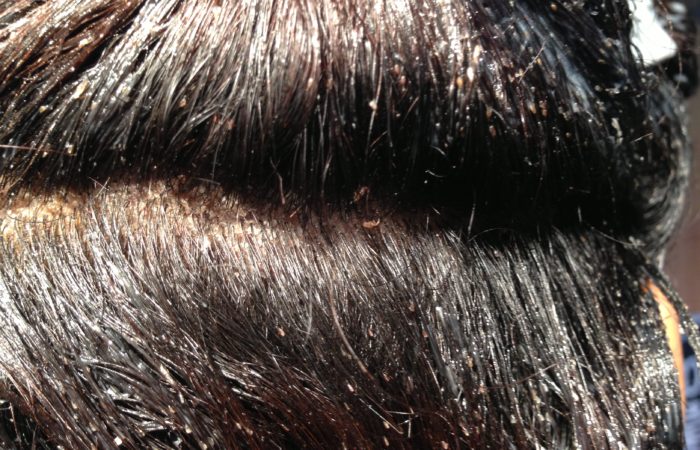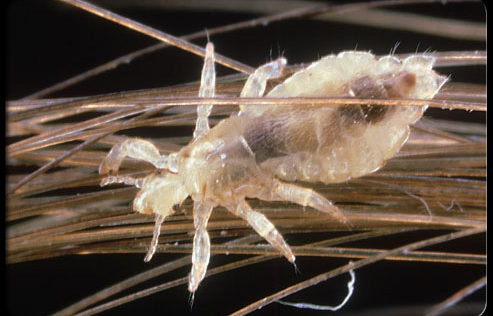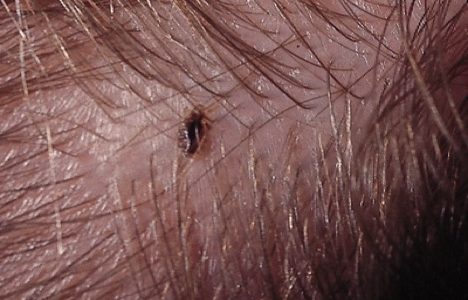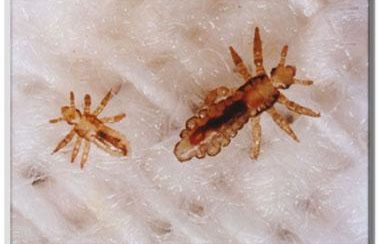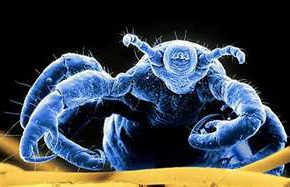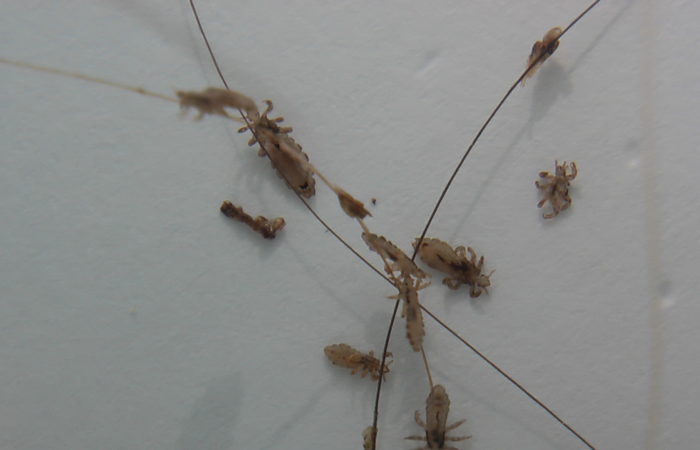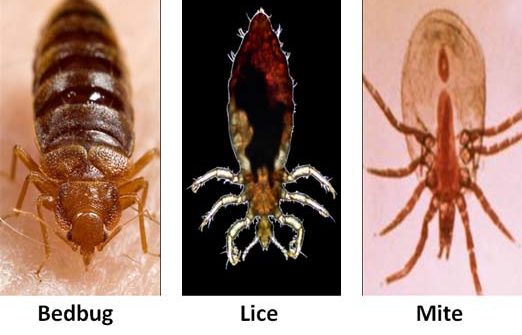Louse:
Adult lice look much like a sesame seed when mature. Their colouring depends on the color of the host’s hair, usually darker on brunettes. The six-legged insect is capable of living up to 35 days on a person’s head. They are small wingless insects, between 1mm and 3mm long. They cannot fly, hop or jump. Their claws are specially adapted to allow them to grip the hair and quickly crawl along the hair shaft. They live next to the scalp to keep warm. As they lay between 8 to 10 nits per day, an infestation develop rapidly. They feed on blood from their host several times a day. Without a food source, a louse can only survive up to 48 hours.
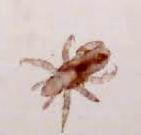
Nymphs: Nymphs look almost identical to adult head lice, except for size. After hatching, nymphs go through three stages of growth moltings each time, maturing in between 7 to 10 days. Their colouring is similar to nits-yellow or tan-but in a darker range. To live, nymphs must feed on blood.
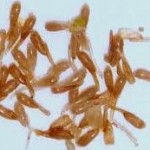
Nits: Nits are another name for head lice eggs. They are less than 1 mm in size, about the size of a knot in a thread–very small. Many people misidentify nits as dandruff or bits of hair residue. They are yellowish or tan in colour and can easily blend in with the hair colour of their host. Each of the eggs is oval in shape and is often found in groupings. Eggs hatch in 6 to 9 days, varying by environmental conditions. Nits are commonly found behind the ears and at the nape of the neck, firmly attached to the hair shaft.
It is a good idea to familiarize yourself with the louse life cycle to better understand how to break up the reproductive cycle of the louse.
Try these sites for more information and great pictures: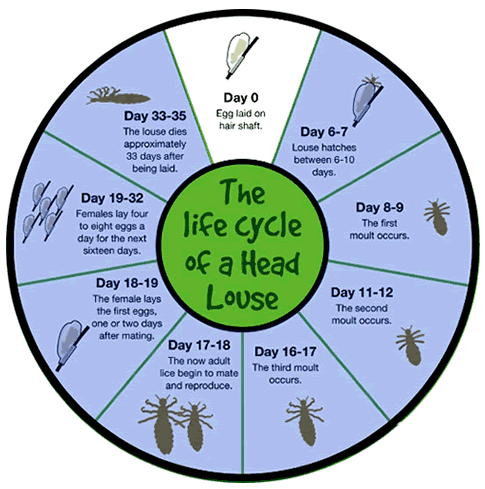
http://www.headlice.org/faq/lousology.htm

